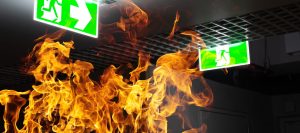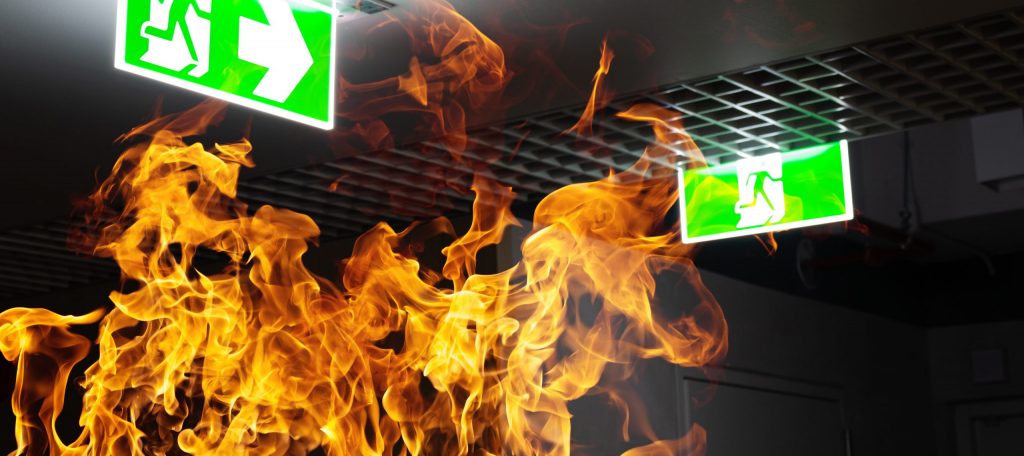All Blogs, Health and Safety, Priming and Protecting
What are Flame Retardant and Fire Resistant Paints?
What are flame retardant, fire resistant and intumescent paints? The terminology is widely (and sometimes incorrectly) used. It can be confusing to know which coating you need and in what circumstances, but it is vital to apply the correct amounts to ensure you have the depth/coverage to make the coating effective. If fire resistant paint or intumescent paint has been specified as a requirement of a building project, then you’ll need to source it from an approved supplier. Your supplier will advise on the correct amount of paint and how it should be applied. A completion certificate will almost certainly be required and we’ve provided more details about this below.
In order to help first of all, we’ve briefly explained a few points: understanding the terminology; how the paints work; knowing what type of paint to use and more information about obtaining the relevant certification.
Fire Paints Terminology
The two basic objectives of fire resistant and smoke/flame retardant coatings are:
- To help protect a structure and keep it intact for long enough for people to evacuate
- To limit the spread of flames and smoke so that people are able to evacuate safely
People often use terms like fire resistant, flame retardant and intumescent as if they mean the same thing. Here’s how to distinguish:
Fire resistant – think ‘Time’
 Fire resistance refers to an amount of time that a structural component of a building will remain safe or intact. This is usually given in minutes. Fire resistance is also used to indicate the amount of time a compartmentalised space can withstand the passage of fire (e.g a door, a wall).
Fire resistance refers to an amount of time that a structural component of a building will remain safe or intact. This is usually given in minutes. Fire resistance is also used to indicate the amount of time a compartmentalised space can withstand the passage of fire (e.g a door, a wall).
Flame retardant – think ‘Spread’

Fire retardance refers to rate of flamespread (and also smoke and toxic emissions). Fire or flame retardance is usually given in terms of class (e.g Class 1, Class 0, Class B). These classes relate to BS & EU standards which measure flamespread, the amount of smoke, flaming droplets and levels of toxins in controlled situations.
Intumescent
The term intumescent, when used in connecton with a paint or coating, refers to products which achieve ‘fire resistance’ by expanding (when exposed to the heat of fire) to create an insulating layer that protects the actual structure beneath allowing extra time for evacuation etc.
Flame Retardant and Fire Resistant products are often used together – the retardant product acting as a top coat over an intumescent fire resistant product.
How do Flame Retardant and Fire Resistant Paints work?
Fire resistant or intumescent paints react to heat created by fire and swell up to create an insulating layer. This layer will protect the structure long enough to allow safe evacuation. Intumescent paint requirements are specified in terms of time (usually minutes) e.g 30m, 60m, 90m, 120m etc. Note…you will often hear the word ‘ intumescent’ used as a general term to refer to all fire resistant and retardant paints.
Flame retardant paints hamper the spread of flames by emitting gases when exposed to smoke or flames which helps to dampen them down – restricting the spread and allowing people to evacuate.
What Type of Intumescent Paint and How Much to Apply?
Architects, builders and civil engineers will be familiar with fire safety requirements for new and existing buildings. It is important to liaise with the coatings manufacturer or supplier for help with selecting the appropriate product, or mix of products to meet the buildings fire protection specification. As an example, to establish the correct coating/mix of coating for steel structures you will be asked for a range of details including:
- The dimensions of the beams
- Details of the fire rating required in minutes
- Information about the steel (i.e whether it is new or old)
- Whether it is external or internal and whether is has previously been primed or coated with any other products
- Support for floor or ceilings
- Dimensions D x W /length in linear metres / Flange thickness
- Details of the fire exposure e.g 4 sides 3 sides etc
- Steel Types or shape – Joist /Universal Column/ Universal Beam/ Flat/ Channel ( U shape ) / Angle ( L shape ) Hollow Sections etc
Your supplier will then recommend the correct mix of products, the coating thickness required etc.
Why do I need fire certificate of supply?
Proof that you have applied the right fire resistant/ flame retardant coatings in the correct manner, is needed in order for a fire certificate to be issued in respect of the project. A fire certificate will be needed to satisfy many organisations/regulations including Local Authority Building Control, Fire Authorities and Insurers. Reputable suppliers like Palatine Paints, will be able to organise this certificate of supply free of charge.
The https://www.firesafe.org.uk/ gives some more details of firesafe regulations. Palatine Paints is a certified supplier of Tremco Illbruck (Nullifire) and Thermoguard fire resistant products, see the British Coatings Federation Information for more details.
Achieving a Decorative Finish with Intumescent Paint?
Having applied an intumescent basecoat to protect steelwork against fire doesn’t mean sacrificing appearances. An approved topseal is designed to give a good looking finish to steelwork, but will also protect the intumescent basecoat underneath. Palatine Paints are proud supply a Nullifire approved topseal, which means you can achieve a gloss, satin or matt finish, in your chosen colour. As approved suppliers we can help with all your intumescent and flame retardant paint requirements from start to finish, just contact us via:
- Phone:01942 884122
- Email:[email protected]
- Online chat

